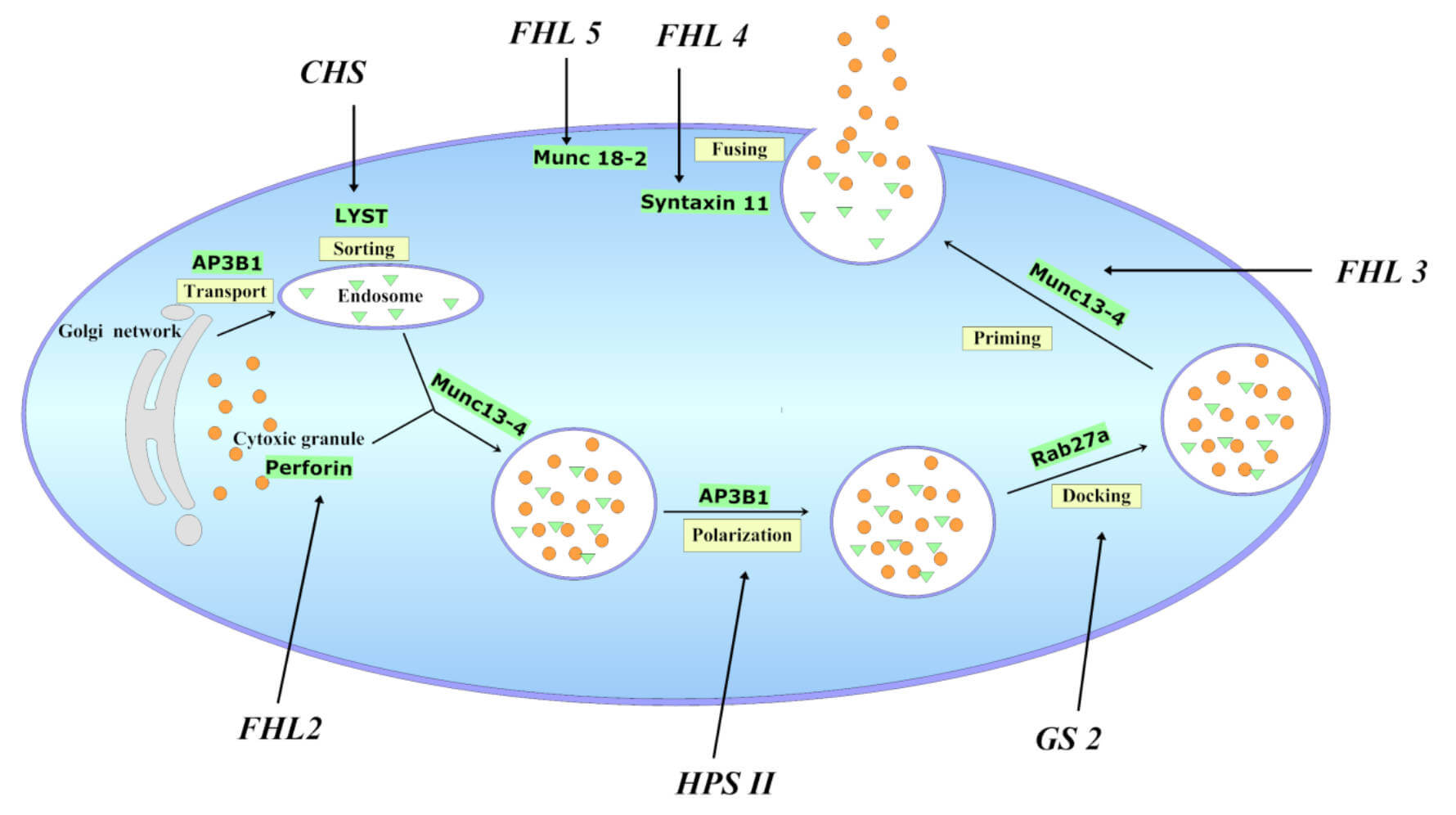Creative Biolabs is an undisputed leading provider of antibody development and generation services. Now, we provide in vitro diagnostic (IVD) antibody development services targeting various biomarkers of a wide variety of diseases. Especially, Creative Biolabs offers high-quality antibody development services for diagnostic applications targeting AP3B1 as a potential biomarker of lymph cancer.
AP-3 Complex Subunit Beta-1 (AP3B1)
AP-3 complex subunit beta-1 is a protein encoded by the AP3B1 gene in humans. The protein plays a role in organelle biogenesis associated with melanosomes, platelet dense granules, and lysosomes. It is part of the heterotetrameric AP-3 protein complex which interacts with the scaffolding protein clathrin. Mutations in this gene are associated with Hermansky-Pudlak syndrome type 2.
 Fig.1 AP3B1 is one of the defective genes of HLHs in hemophagocytic lymphohistiocytosis.1
Fig.1 AP3B1 is one of the defective genes of HLHs in hemophagocytic lymphohistiocytosis.1
AP3B1 Marker of Lymph Cancer
Congenital neutropenia represents a heterogeneous group of disorders. Over the past few years, heterozygous mutations in the gene encoding neutrophil elastase have been associated with cyclic1 and congenital2 neutropenia. Aberrant vesicular trafficking of endosomes has been proposed as one potential mechanism accounting for decreased neutrophil numbers. Intracellular protein sorting and trafficking are controlled by means of coat proteins. The adaptor protein-3 (AP-3) complex facilitates trafficking of vesicles from the trans-Golgi network and/or endosomal compartments. AP-3 belongs to the family of cytosolic adaptor complexes and is involved in intracellular protein sorting and vesiculation. Dogs with mutations in AP3B1 have cyclic neutropenia. These animal models indicate that AP-3 deficiency results in increased surface expression of lysosomal proteins. In humans, mutations in AP3B1 cause a complex phenotype known as Hermansky-Pudlak syndrome11 type 2 (HPS2).
Besides, familial hemophagocytic lymphohistiocytosis (FHL) is a rare and often fatal disorder characterized by defective cellular cytotoxicity and hyperinflammation, and the only cure known to date is hematopoietic stem cell transplantation. Mutations in AP3B1 give rise to FHL associated with oculocutaneous albinism.
IVD Antibody Development Service Targeting AP3B1 Marker
Antibodies are core elements for antibody-based immunoassays for detecting and quantifying antigens of interest in all kinds of samples such as serum, urine, and tissue preparations. IVD antibodies are extensively used for disease screening, prognosis, and therapeutic monitoring. With our versatile IVD platform, Creative Biolabs is proud to develop novel AP3B1-specific antibody from scratch to commercial IVD kit (we can also start with provided antibody candidates).
Creative Biolabs has successfully completed a number of IVD antibody generation and development projects for clients across the globe. If you are interested in our services, please contact us to discuss your project needs.
Reference
- Tang, Yong-Min, and Xiao-Jun Xu. "Advances in hemophagocytic lymphohistiocytosis: pathogenesis, early diagnosis/differential diagnosis, and treatment." The Scientific World Journal 11 (2011): 697-708. Distributed under Open Access license CC BY 3.0, without modification.
For Research Use Only.

